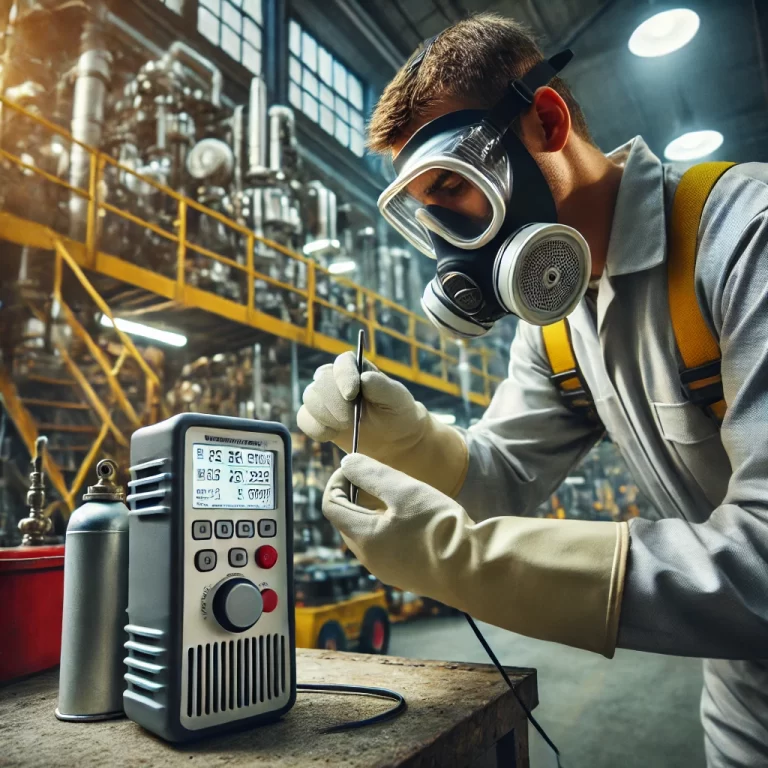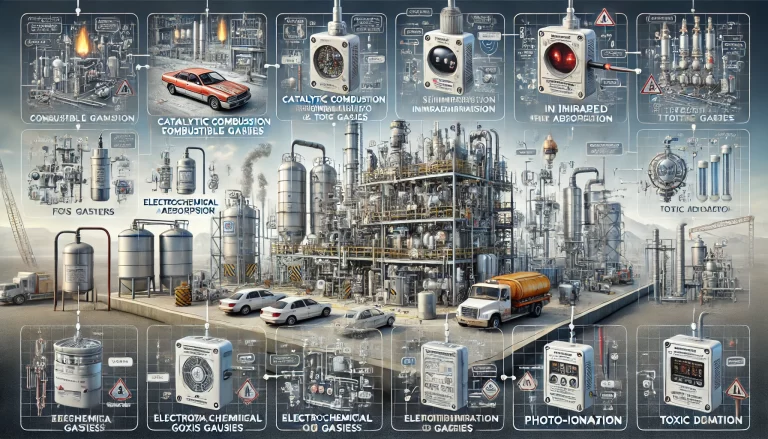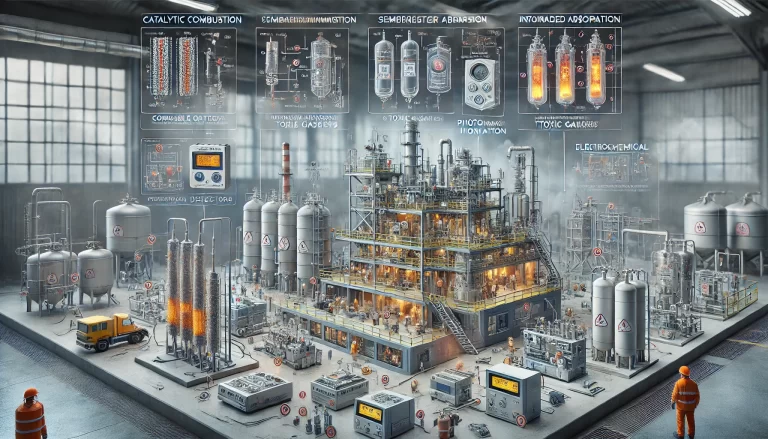Proper installation of methanol gas detectors is critical for ensuring the safety and efficiency of operations in environments where methanol leaks might occur. This document outlines comprehensive guidelines for selecting installation locations, determining the height and method of installation, wiring requirements, and other safety measures.
Installation Location
Near Potential Leak Sources
- Install detectors close to potential methanol leak points, such as storage tanks, pipelines, valves, and flanges.
- Detectors should be placed within a radius of 1 meter from these sources to quickly detect changes in methanol gas concentrations.
Personnel Gathering Areas
- Position detectors near areas where employees frequently work, rest, or gather, such as workshops, control rooms, and break rooms.
- This ensures timely alarms to prompt personnel to take protective actions in case of leaks.
High Concentration Areas
- Install detectors in locations prone to higher methanol concentrations under normal working conditions or those with potential leaks to enhance early detection.
Ventilation Points
- Consider placing detectors near ventilation openings to act as early warning points during system malfunctions or changes in wind direction.
- Avoid placing detectors directly in the path of strong airflow to prevent detection interference.
Avoid Interference Sources
- Ensure detectors are positioned away from interference sources such as steam, oil vapors, dust, and strong electromagnetic fields (e.g., from large motors or transformers).
- This minimizes the risk of false alarms or sensor malfunctions.

Installation Height
- Methanol gas is heavier than air, so detectors should be installed 0.3–0.6 meters above ground level to maximize detection efficiency.
Installation Method
Secure Mounting
- Use reliable methods such as ceiling suspension, wall mounting, or pipe clamping.
- Ensure detectors are securely installed to prevent displacement or falling due to vibrations.
Accessibility for Maintenance
- Choose installation locations with sufficient surrounding space for easy access to maintenance, calibration, and repairs.
- This reduces downtime and ensures the detector remains operational.
Wiring Requirements
Cable Specifications
- Use three-core shielded cables with a wire gauge of at least 1 square millimeter.
- Connect the shield to ground to reduce electromagnetic interference.
Protective Conduits
- Route cables through protective conduits that meet fire safety requirements.
- Ensure the conduits are securely connected to the detector to protect the cables from damage.

Additional Safety Considerations
Compliance with Safety Standards
- Adhere to relevant safety regulations and standards, such as GB 50493: Design Specification for Combustible Gas and Toxic Gas Detection Alarm Systems.
- Ensure the alarm’s explosion-proof rating matches the requirements of the installation site.
Ease of Access and Maintenance
- Position detectors in easily accessible locations to facilitate regular maintenance and ensure they remain in good working condition.
- Quick replacement or repair should be possible when necessary.
Integration with Alarm Systems
- Install gas alarm controllers in safe and easily monitored locations, such as control rooms.
- Securely connect the controllers to detectors to ensure accurate and uninterrupted signal transmission.
Maintenance and Testing Recommendations
Routine Maintenance
- Conduct monthly and annual maintenance checks to ensure the detector’s reliability.
- Calibrate the sensors as per the manufacturer’s recommendations.
Functional Testing
- Test the alarm system periodically using standard methanol gas concentrations to verify accuracy and response times.

Illustrative Examples and Practical Applications
Example: Storage Facility
- In a methanol storage site, detectors should be installed around tank flanges and access valves, with additional units near ventilation systems to detect potential leaks.
- Controllers placed in the site’s central monitoring room ensure real-time alerts and quick responses.
Example: Production Workshop
- Install detectors near potential leak points in production lines, such as joints or processing equipment.
- Position additional detectors in staff work zones to ensure early warnings for workers.
By following these detailed guidelines, organizations can enhance safety, reduce risks of methanol-related incidents, and maintain compliance with industry standards. These measures also contribute to creating a safer workplace environment for all employees.
